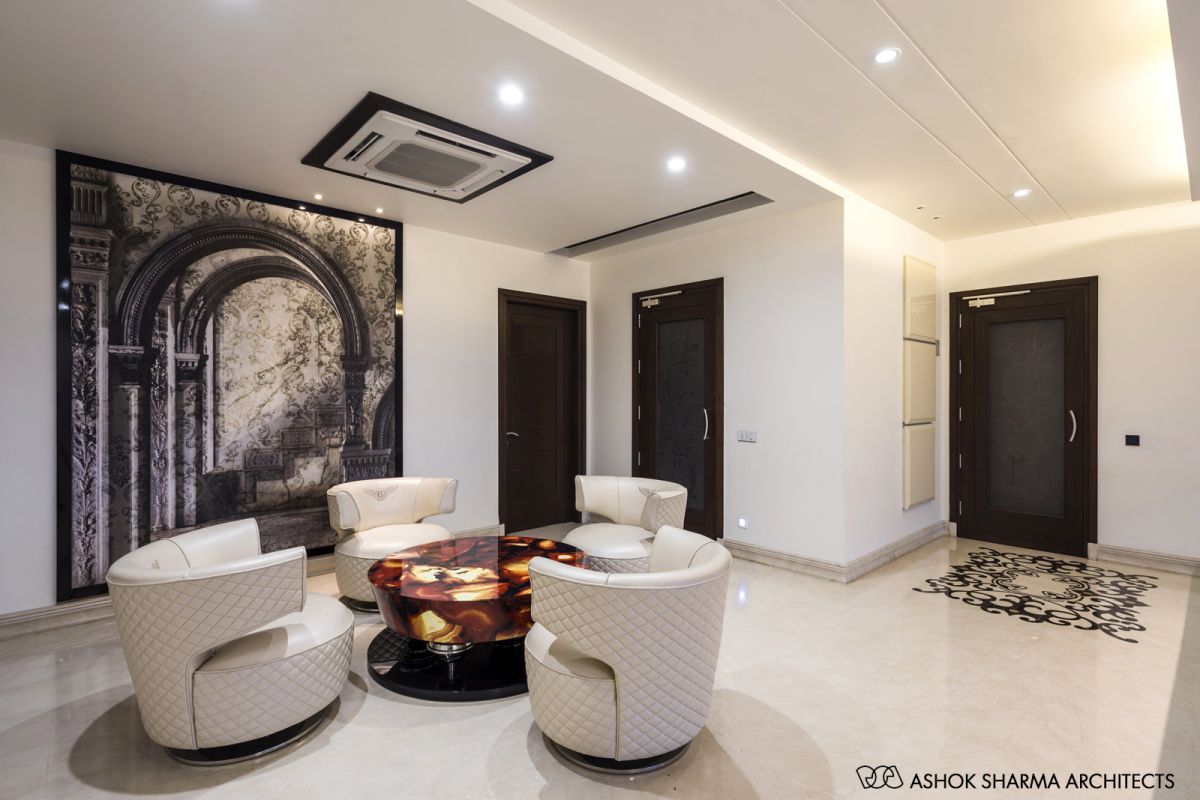 The House of Canopy was designed with a balance of form and composition.
The House of Canopy was designed with a balance of form and composition.
Designed for a family of four, the client requirement stated a provision of three bedrooms and a common party/gathering area along with a Jacuzzi-cum-spa for friends and family visiting the client.
The elevational masses and volumes, along with distinction in architectural spaces is the design highlight of the residence.
The double-height interior space, along with the play of mirrors in the living area becomes the identity of the house for the residents. The ground floor houses a double-height living and dining area opening into the drawing-room, the master bedroom and a guest bedroom along with the kitchen. As one moves upstairs to the first floor, the staircase opens up into the family sitting area with the party/gathering area planned on one side and a bedroom and a Jacuzzi-cum-spa planned on the other side. The walls of the party/gathering area are made sound-proof so as to keep the areas outside of it noise-free. The party/gathering area was a requirement by the client for extended family gatherings or movie nights with friends and family. Luxurious materials, coupled with a subtle colour palette help the interiors achieve a look of luxury and add richness to the design. The various interior furniture includes pieces from Versace and Bentley, chosen especially to suit the interior design language. The language of design is continued while designing the washrooms as well; a palette of neutral-coloured materials is punctured with burst of beiges and browns and a range of subtle textures gives these spaces a warm outlook. The dressing areas are kept bright with a high-gloss finish on the furniture which makes it look bright and keeps it sober at the same time.
The master bedroom on the ground floor is designed in the shades of off-white, contrasting against the browns and beiges of the furnishings and the furniture. The open living space upon entering the residence allows the entire ground level space to expand and be enjoyed in a variety of ways. The kitchen is kept neat and clutter-free for easy functionality for the family. The other two bedrooms are designed in a more personalized way to reflect the user’s functional requirements, taste and age.
Clean, contemporary lines aide an architectural feel to the spaces, while neutral tones of off-white and beige soften the linear experiences. A much defined visual language is utilized to make the residence stand out amongst the buildings in the vicinity of the site. The entrance to each space within the residence is well defined and characterized by a strong sense of linearity and vividness. The marble inlay work done on the main entrance gives a heavy yet subtle look upon reaching the main door. The residence gives the feel of a conventional yet contemporary look with the dynamic canopy reaching down to us naming this project as ‘the house of canopy’.






















